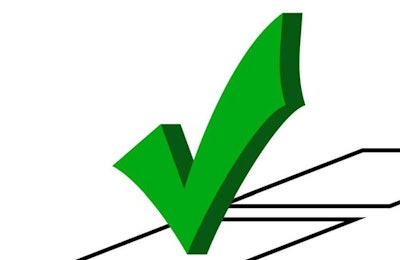
As the feed industry scrambles to keep up with the expanded requirements outlined in the Food Safety Modernization Act (FSMA), many are wondering what they need to do to become compliant.
The American Feed Industry Association's Feed Production Education program offered important information, updates and tips about the FSMA and other recent regulatory requirements for the feed industry at the 2017 International Production & Processing Expo in January.
We’ve created a handy infographic showing the key recommendations that Robert Prevendar, Global managing director, Supply Chain Food Safety & Agriculture at NSF International, offered attendees regarding how they can more easily become compliant with FSMA:

Share this Image On Your Site
The FSMA updates are important, said Prevendar, because the FDA looks at feed in an entirely new way with these regulations.
“For the first time in the history of the U.S., feed is defined as food,” said Prevendar. “The FDA isn’t really differentiating between feed and food. By and large in the definition section of the FSMA, food is feed and feed is food.”
According to Prevendar, the new FSMA will impact the food safety plan for almost all feed companies.
“If you’ve got a food safety plan, good news for you…you’re probably almost 80% of the way there.”
Prevandar went on to describe six steps that feed producers and suppliers should take to ensure compliance:
- Understand the requirements - Review the new requirements to ensure that you fully understand what needs to be done.
- Form a food safety team - Designate a PCQI, develop a cross functional team and clearly define roles and responsibilities.
- Perform a gap assessment - Compare your facility, processes and food safety plan to the new requirements, identify missing elements and prioritize the items needing work.
- Document the food safety plan – Be sure that your food safety plan includes hazard analysis, preventive controls, monitoring activities, corrective actions, verification and analysis.
- Implement the food safety plan – This is, according to Prevendar, the most difficult part. Your food safety plan will need to be communicated, staff will need to be trained and you will need to provide the necessary tools to ensure successful implementation. In addition, ongoing monitoring and reviewing will be required.
- Maintain and improve the food safety plan - Keep good records and conduct periodical analyses to ensure that your food safety plan is being upheld.
Although these steps might seem overwhelming at first, Prevendar recommended taking it one step at a time.
“The reality is it’s here,” he said. “It’s not going away. The FSMA has passed.”
Prevendar was quick to point out that most facilities are not ready yet – but if this applies to you, don’t panic! So what advice does Prevendar have for the feed industry to ensure compliance?
“Start early,” he cautioned. “Start now.”















